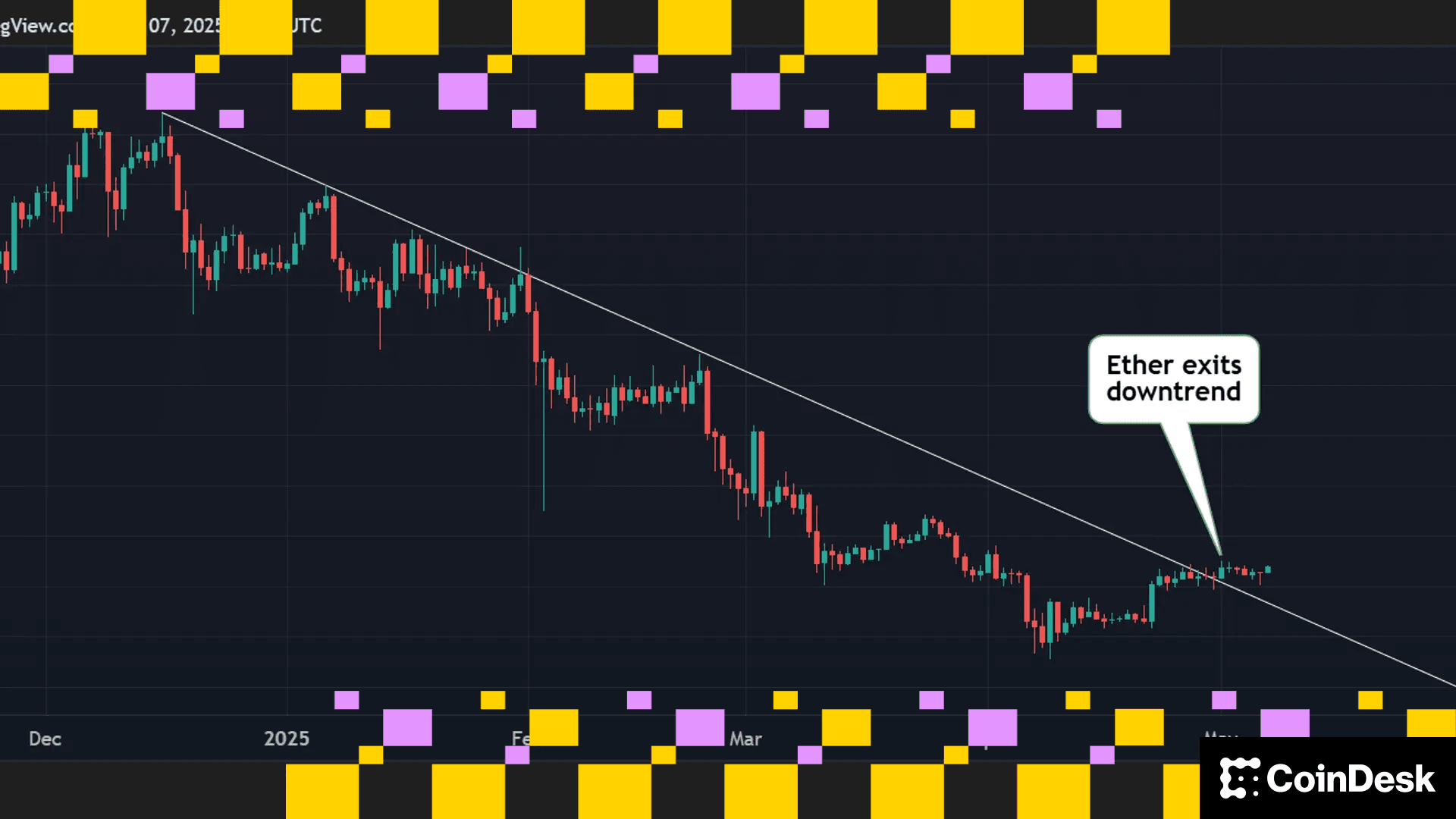U.S. Banking Crisis Could Present an Opportunity for Some Crypto Exchanges: JPMorgan
Stablecoin trading volumes have increased following the run of bank collapses in the U.S., the report said.

A number of fintech payment companies and offshore banks are trying to fill the void left by the collapse of Silvergate Bank, Silicon Valley Bank and Signature Bank in the U.S., but it will likely take time before new banking networks are established, JPMorgan (JPM) said in a research report Wednesday.
“In the meantime, crypto market participants and investors appear to have become more reliant on stablecoins to move money around,” analysts led by Nikolaos Panigirtzoglou wrote. A stablecoin is a type of cryptocurrency whose value is pegged to another asset, usually the U.S. dollar.
The bank says stablecoin trading volumes spiked higher after March 8, when crypto-friendly bank Silvergate said it would voluntarily liquidate and wind down operations. It notes that
JPMorgan says the collapse of the three banks has affected crypto firms in different ways. Crypto companies with diversified banking partners, like some exchanges, were less affected.
“The banking crisis could present an opportunity for some exchanges which could gain market share by offering banking services to crypto-native firms and investors,” the note said.
Still, in the longer term it is vital for the crypto ecosystem to replace the banking networks that have been lost so that fiat currency can be transferred efficiently and securely between market participants, “ensuring at the same time the stability of the stablecoin universe,” the note added.
The tougher U.S. regulatory stance might drive crypto market participants to banking networks in Europe and Asia, the report added.
Read more: Replacing Silvergate’s Network Is a Challenge for Crypto Industry: JPMorgan
More For You
Exchange Review - March 2025

CoinDesk Data's monthly Exchange Review captures the key developments within the cryptocurrency exchange market. The report includes analyses that relate to exchange volumes, crypto derivatives trading, market segmentation by fees, fiat trading, and more.
What to know:
Trading activity softened in March as market uncertainty grew amid escalating tariff tensions between the U.S. and global trading partners. Centralized exchanges recorded their lowest combined trading volume since October, declining 6.24% to $6.79tn. This marked the third consecutive monthly decline across both market segments, with spot trading volume falling 14.1% to $1.98tn and derivatives trading slipping 2.56% to $4.81tn.
- Trading Volumes Decline for Third Consecutive Month: Combined spot and derivatives trading volume on centralized exchanges fell by 6.24% to $6.79tn in March 2025, reaching the lowest level since October. Both spot and derivatives markets recorded their third consecutive monthly decline, falling 14.1% and 2.56% to $1.98tn and $4.81tn respectively.
- Institutional Crypto Trading Volume on CME Falls 23.5%: In March, total derivatives trading volume on the CME exchange fell by 23.5% to $175bn, the lowest monthly volume since October 2024. CME's market share among derivatives exchanges dropped from 4.63% to 3.64%, suggesting declining institutional interest amid current macroeconomic conditions.
- Bybit Spot Market Share Slides in March: Spot trading volume on Bybit fell by 52.1% to $81.1bn in March, coinciding with decreased trading activity following the hack of the exchange's cold wallets in February. Bybit's spot market share dropped from 7.35% to 4.10%, its lowest since July 2023.
More For You











